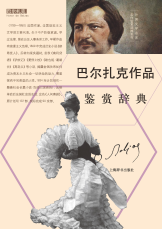
主要责任者: 上海辞书出版社文学鉴赏辞典编纂中心
责任方式: 编
出版者: 上海辞书出版社
出版地: 上海
字数: 147 千字
页码: 1-196
开本: 32
中图分类号: I565.064-61
语种:中
定价:28.00
出版时间:2016-01
丛书多卷书否:是
丛书名:外国文学名家名作鉴赏辞典系列
书目简介:本册工具书是外国文学名家名作鉴赏辞典系列之一,共收录11条词条。
被引频次:1
| 词条 | 巴尔扎克作品鉴赏辞典 |
| 类别 | 中文百科知识 |
| 释义 |  主要责任者: 上海辞书出版社文学鉴赏辞典编纂中心 责任方式: 编 出版者: 上海辞书出版社 出版地: 上海 字数: 147 千字 页码: 1-196 开本: 32 中图分类号: I565.064-61 语种:中 定价:28.00 出版时间:2016-01 丛书多卷书否:是 丛书名:外国文学名家名作鉴赏辞典系列 书目简介:本册工具书是外国文学名家名作鉴赏辞典系列之一,共收录11条词条。 被引频次:1 |
| 随便看 |
开放百科全书收录579518条英语、德语、日语等多语种百科知识,基本涵盖了大多数领域的百科知识,是一部内容自由、开放的电子版国际百科全书。